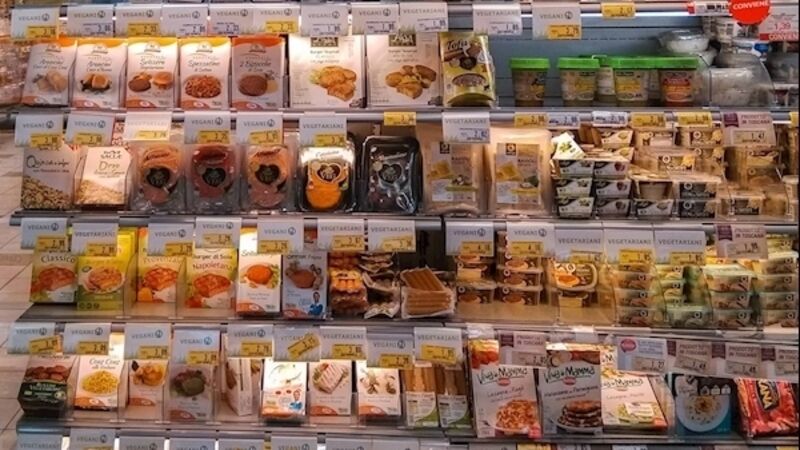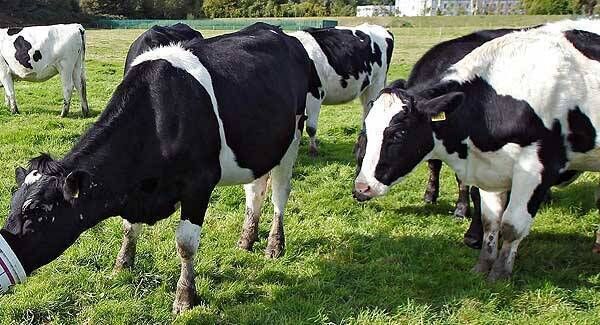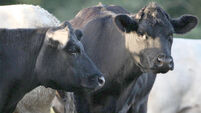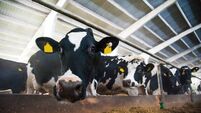Plant-based foods just as good for bottom line as meat and dairy

How do you make a profit from selling vegetables or nuts? Pretend they are animals.
“We are revolutionising dairy products by making them from plants instead of cows,” says food entrepreneur Miyoko Schinner, based in California.
Having raised more than €12 million in start-up funding, her company, Miyoko’s Kitchen, has its products in an estimated 10,000 stores in the US, has entered the Canadian market, and has ambitions to sell in Asia, several Latin American countries, and possibly Europe.
It claims to make “radically real” cheese and butter, but without cows.
Billing her company as “tomorrow’s creamery” for a dairy-free future, Schinner says: “The evolution of dairy is phenomenally vegan.”
It’s a growing trend, with consumers around the world being given the choice of soy, almond, coconut, hazelnut, rice, oat, macadamia and even walnut milk.
Multinational food giant Unilever has launched the Magnum Vegan ice cream in some markets, made from vanilla-flavoured pea protein and dairy-free chocolate made from coconut oil and butter.
UK high street bakery Greggs has launched a vegan-friendly sausage roll made from a vegetable oil-based pastry and a “bespoke Quorn filling”.
Dutch manufacturer Vivera was first last year to bring a 100% plant-based steak to the European market via 400 Tesco UK stores. It arrived in Ireland last November.
UK start-up Yumello has developed a range of nut butters, with a marketing emphasis on sweet argan oil and other ingredients from Morocco’s Atlas Mountains.
This food industry trend has grown to the point where the European Court of Justice ruled that terms like milk, cream and butter should only be used for animal products, and must not be used to describe plant-based foods.

However, the global food industry is not too worried about bending the rules of language, when faced with a great opportunity to add value to cheap commodities such as fruit, vegetables and nuts.
High prices for animal commodities such as meat and milk are an important factor driving the food industry to products which can be marketed as vegetarian and vegan.
With the global milk price oscillating from under $20 (€17.7) in 2009 to over $55 (€48.7) per 100 kg in 2014 (IFCN Combined World Milk Price Indicator), it was noticeable that use of non-dairy ingredients increased markedly in the years when milk prices were high.
Food company profitability is limited by what consumers are willing to pay, based on their perceived value of a product. That’s the upper limit, but when the price of the base commodity doubles, in the case of milk, processors cannot be blamed for looking for cheaper ingredients.
The same has happened globally in the beef industry.
EU prices are fairly well insulated from the global beef price; nevertheless, that global average price nearly doubled in 2015, compared to most of the preceding decade.
Modern food companies first determine what attributes consumers want in their food products, and then start looking for ingredients.
They spotted increased consumer demands regarding health, nutrition and convenience, and the trends to veganism, vegetarianism and flexitarianism, and investigated how to satisfy them, using the full gamut of advanced modern food processing technology to add value to competitively priced ingredients.
The continuous shifting to a global economy accelerated this trend, because it is growing the international market for value-added products.
In this evolution of the food industry, relatively unprocessed products such as meats and dairy foods have lost out, to some extent.
How strong is that trend?

Global launches of dairy- alternative beverages have more than doubled since 2012.
US sales of milk alternatives rose by 9% in 2015 alone.
It’s probably not a coincidence that 2014 global milk prices had reached their highest ever monitored level.
The US is reckoned to be the leader by far in this sector for product innovation. It is estimated dairy sales decreased by 7% in the same year, costing the US dairy industry $17.8 billion (€15.7bn).
Australia is a strong dairy consuming nation, with figures from Dairy Australia showing the average Australian consumes 105 litres of fresh milk per year. Non-dairy milk sales make up 6% of total supermarket milk sales, with an increase of only 0.5% in the last three years.












